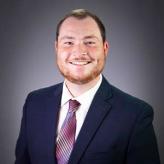Social Media Censorship by Government Officials Cannot Stand


During the COVID-19 pandemic, government officials across the United States trampled on basic rights in the name of “public health.” Nevada, for example, restricted church gatherings while allowing thousands to gather at casinos, the Occupational Safety and Health Administration (OSHA) attempted to force large, private businesses and nonprofits to mandate vaccines, and California restricted free speech near any facilities that offered vaccines.
But one of the most alarming violations of freedom stemming from the COVID-19 pandemic was the coordinated effort by multiple government agencies to pressure social media companies to censor Americans who expressed disfavored viewpoints.
In its recent decision in Missouri v. Biden (now called Murthy v. Missouri), the U.S. Court of Appeals for the 5th Circuit detailed the pressure campaign some government officials launched to purge ideas they did not like from the internet. The appellate court’s decision details communications between social media companies and government officials in the White House, Centers for Disease Control and Prevention (CDC), Federal Bureau of Investigation (FBI), and other government agencies that clearly violate the First Amendment.
Government coercion
“For the last few years—at least since the 2020 presidential transition—a group of federal officials has been in regular contact with nearly every American social-media company about the spread of ‘misinformation’ on their platforms,” the 5th Circuit wrote.
One White House official told a social-media platform to take down a post “ASAP.” Another official told a platform to “remove [an] account immediately,” adding that he could not “stress the degree to which this needs to be resolved immediately.”
The officials were not subtle in their implications that if social media sites did not heed their advice, there would be consequences. One official accused Facebook of not “trying to solve the problem” and said the White House was “[i]nternally … considering our options on what to do about it.”
The First Amendment explicitly bars government officials from abridging the freedom of speech, regardless of whether it does so directly or by coercing private companies to stifle speech on their behalf.
The government officials who coerced social media platforms to take down unfavored views said they were doing so for public health reasons. In fact, President Joe Biden himself claimed that these platforms were “killing people” by not taking steps to censor certain ideas —yet another tactic aimed at coercing Facebook to stifle speech. But the posts flagged by government officials to be censored weren’t exclusively about COVID-19.
Censoring ‘divisive topics’
The 5th Circuit found that the plaintiffs had posts touching on “a host of divisive topics like the COVID-19 lab leak theory, pandemic lockdowns, vaccine side-effects, election fraud, and the Hunter Biden laptop story” either removed or suppressed.
Even within the topic of COVID-19, the dangers of allowing government officials to decide which views may be expressed became apparent. At the beginning of the pandemic, Dr. Anthony Fauci, the director of the National Institute of Allergy and Infectious Diseases (NIAID), called the idea that COVID-19 leaked from a lab in Wuhan a “conspiracy theory” and tried to suppress what he called “the threat of further distortions in the media.”
Now, the U.S. Department of Energy openly admits that the lab leak theory is the most likely explanation for the origin of the pandemic. Regardless of the accuracy of this theory, the fact that government officials went from calling it a “conspiracy theory” to a likely explanation in just three years highlights the dangers of letting these officials censor speech.
Government officials are human, and that means they are fallible. If we allow these officials to decide which views are allowed to be expressed, objective truths may be characterized as falsehoods and purged from public discourse.
Free speech at the Supreme Court
In Missouri v. Biden, the 5th Circuit upheld portions of a preliminary injunction to prevent the White House, surgeon general, CDC, FBI, and Cybersecurity Infrastructure Security Agency (CISA) from coercing social media companies to “remove, delete, suppress, or reduce … content containing protected free speech.” Government officials appealed the ruling, and the U.S. Supreme Court is now set to hear this important free speech case.
The First Amendment is built on the idea that when all ideas are allowed to be expressed, those that are true and good will rise to the top. As Justice Oliver Wendell Holmes Jr. put it:
“[W]hen men have realized that time has upset many fighting faiths, they may come to believe even more than they believe the very foundations of their own conduct that the ultimate good desired is better reached by free trade in ideas—that the best test of truth is the power of the thought to get itself accepted in the competition of the market, and that truth is the only ground upon which their wishes safely can be carried out. That at any rate is the theory of our Constitution.”
In a free society, censorship is never the answer. Government officials should never have the authority to decide which ideas get to see the light of day. We must maintain a robust marketplace of ideas, which is why the Supreme Court must affirm that government officials cannot decide who does or doesn’t get to share their views on social media.

